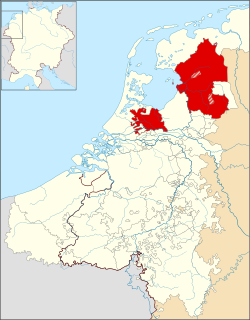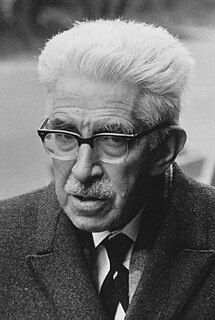Goswin is a Germanic male given name originally meaning "friend (win) of the Goths (gos)" [1] As Gosewijn, Goswijn or Gozewijn (with short forms Goos, Goes, Gosse and Geus) it was quite common in the Middle Ages in the Low Countries. [1] [2] Latinized versions include Gos(s)uinus, Gosvinus, and Goswinus, while in French the name has been rendered Gosvin and Gossuin (e.g. fr:Gossuin d'Anchin).
Germanic given names are traditionally dithematic; that is, they are formed from two elements, by joining a prefix and a suffix. For example, King Æþelred's name was derived from æþele, for "noble", and ræd, for "counsel".

The Goths were an East Germanic people, two of whose branches, the Visigoths and the Ostrogoths, played an important role in the fall of the Western Roman Empire through the long series of Gothic Wars and in the emergence of Medieval Europe. The Goths dominated a vast area, which at its peak under the Germanic king Ermanaric and his sub-king Athanaric possibly extended all the way from the Danube to the Don, and from the Baltic Sea to the Black Sea.

French is a Romance language of the Indo-European family. It descended from the Vulgar Latin of the Roman Empire, as did all Romance languages. French evolved from Gallo-Romance, the spoken Latin in Gaul, and more specifically in Northern Gaul. Its closest relatives are the other langues d'oïl—languages historically spoken in northern France and in southern Belgium, which French (Francien) has largely supplanted. French was also influenced by native Celtic languages of Northern Roman Gaul like Gallia Belgica and by the (Germanic) Frankish language of the post-Roman Frankish invaders. Today, owing to France's past overseas expansion, there are numerous French-based creole languages, most notably Haitian Creole. A French-speaking person or nation may be referred to as Francophone in both English and French.
People with this name include:
- Gosse Ludigman (died 1000), possibly fictitious governor of Western Frisia
- Goswin I of Heinsberg (ca. 1060–1128), Limburg count, lord of Valkenburg
- Goswin of Anchin (c. 1085–1165), Flemish Benedictine abbot and saint
- Goswin (bishop of Poznań), 12th-century Polish Bishop
- Gozewijn van Randerath (fl. 1250), Bishop of Utrecht
- Goswin von Herike (died 1359), ruler of Livonia
- Goswin Haex van Loenhout (died 1475), Auxiliary Bishop of Utrecht
- Goswin van der Weyden (1455–1543), Flemish painter
- Goswin Nickel (1582–1664), German Jesuit priest
- Goswin de Fierlant (ca. 1735—1804), Flemish councillor
- Goswin de Stassart (1780–1854), Dutch-Belgian politician
- Gozewijn Jan Loncq (1810–1887), Dutch physician and University Dean
- Goswin Karl Uphues(1841–1916), German philosopher
- Goswin von der Ropp (1850–1919), German historian
- Goos Meeuwsen (born 1982), Dutch circus performer
Gosse Ludigman was a legendary potestaat of Friesland, now a province of the Netherlands. He does not appear in sources until hundreds of years after his supposed life.
Goswin I of Heinsberg was the Count of Heinsberg from 1085–1128. He was (most-possibly) the father of Goswin II of Heinsberg. He reigned since an unknown period with his brother Gerhard I of Heinsberg. His wife was Oda von Walbeck. He died in 1128 and was succeeded by Goswin II.
Goswin was a Benedictine abbot. Born in Douai in 1082, then in the County of Flanders and since 1668 in France. Goswin studied in Paris and afterwards returned to Douai to teach theology. He then entered Anchin Abbey in 1113, and became a Benedictine monk. In 1130 he was made abbot of the Anchin Abbey in Pecquencourt near his hometown.








